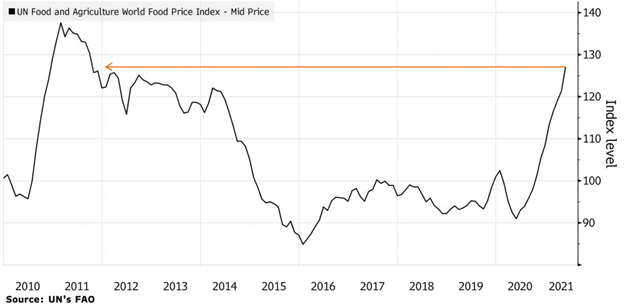Food prices reached a 10-year high, according to the Food and Agriculture Organization of the United Nations (FAO). As measured by the FAO Food Price Index, which tracks the monthly change in international prices of a group of food commodities, food prices, in general, are up 1.2% month over month and up 32.8% from this same time last year. Over the last year, cereal grains are up 27.3%, vegetable oils are up 60%, dairy is up 15.2%, meats are up 24.1%, and sugar is up 53.5%.

Why are food prices so high? Is it just because corn and soybean prices are up substantially over 2020? Beyond commodity prices, additional factors are driving these increases. Ingredient shortages, supply chain bottlenecks, inflation, lack of staffing, the unpredictability of trucking, container ship delays are all partial contributors. For example, shipping a 40 ft container cost around $1,920.00 last year and now the cost can be as high as $14,000.00. Costs are up across the board. Food packaging – plastics, cardboard, wood pallets, and aluminum materials – are all higher. Drought and other weather events across the globe contributed to higher commodity prices. Labor shortages pushed many to offer higher wages in hopes of attracting more workers. There is no single reason for higher food prices, it is simply a “perfect storm” of factors leading to this increase.
Where do food prices go from here? Despite consumers spending a larger percentage of their income in the grocery store, there are predictions of relief in sight. According to the USDA – food at home prices through the end of the year are expected to soften 1.5-2.5%, bringing a sense of relief to the stress of increased food prices. As shipping bottlenecks work out, labor normalizes and the pandemic eases food prices should ease, along with inflation in many other areas.






